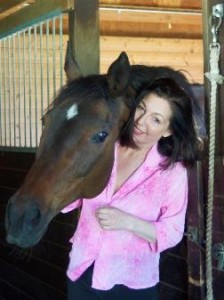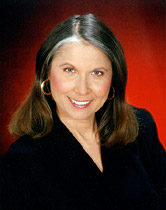by admin | Apr 5, 2015

Whether you are delivering a business or sales presentation, it’s a mistake to think you can just “wing it.” If you have years of experience in your industry or profession, this still holds true. Even professional speakers must prepare for and rehearse before each presentation.
My brother Robert Fripp, the genius in my family and an internationally acclaimed guitarist, describes it this way: “Every time you put your foot on the stage, there is an assumption of innocence within a context of experience.” In other words, Robert has played the guitar for 50 years, but he approaches each performance with the awareness that this is the first time, for this audience, in this venue, at this period in time.
While you may be experienced, it is a good policy to think of every assignment as new and fresh within its unique context. For example, if you’re a professional speaker, the last 300 audiences may have loved you, but you do not know if this next one will. You cannot take it for granted.
Most importantly, you cannot take your audience for granted. Speaking is always all about your audience. Consider what makes your audience unique and how you might connect both intellectually and emotionally. Whether you are speaking for the first time or the thousandth, here are a few strategies to help you give every audience your best:
- Avoid the temptation to just “wing it.”
- Start preparing well in advance. You will thank yourself later!
- Research your audience. Take time to read industry, association, or company publications and familiarize yourself with your audience’s unique interests and concerns.
- Customize your presentation for each audience.
- Edit your presentation for clarity, specificity, and emotional connection.
- If you plan to use slides, customize and edit these also. Don’t get too carried away with slides. An audience expects to connect with you – a real person speaking – not sit through an endless slideshow.
- Rehearse, rehearse, and then rehearse some more.
- Whenever possible, meet a few members of your audience before you take the stage.
- Physically warm up before your presentation.
by admin | Apr 1, 2015

If you need to make your message memorable, your presentation persuasive, and your sales successful, Patricia Fripp is the expert to seek out.
She arrived in San Francisco from England at age 20 as a hairstylist with no job or contacts and little money. Patricia excelled in the beauty industry and became San Francisco’s most in-demand men’s hairstylist when that was a new domain. She started training stylists and speaking to promote her business which led into her next successful career as a keynote speaker. On 60 Minutes she was asked, “There must be a big difference between being a hairstylist and a speaker?” She replied, “I used to work on the outside of heads; now I work on the inside. There is only a half inch difference.”
Fripp has won or been awarded these designations by the National Speakers Association: Certified Speaking Professional (CSP), CPAE Hall of Fame keynote speaker, and the Cavett Award (considered the Oscar of speaking). Named “One of the 10 most electrifying speakers in North America” by Meetings and Conventions magazine, Patricia delivers high-content, entertaining, dramatically memorable presentations.
One of the few professional speakers who can the transform the presentation skills of others, she is an executive speech coach and sales presentation skills trainer. Kiplinger’s Personal Finance wrote that one of the best investments in your career is Patricia Fripp’s presentation skills training.
Patricia is a past president, and the first female president, of the over 3,000-member National Speakers Association and a partner in World Champions’ EDGE coaching community with four Toastmasters International World Champions.
Patricia often teams up with her brother, legendary guitarist of King Crimson Robert Fripp, for Fripp and Fripp presentations on “How to Be a Hero for More Than One Day” and “Beginner to Master.”
Patricia is now virtually everywhere with FrippVT.com, her interactive, learn-at-your-own-pace, virtual presentation skills training.
Fripp Virtual Training Powerful Persuasive Presentations is a multimillion-dollar, state of the art, web-based training platform that emulates live training and coaching. It is almost as if Patricia Fripp were sitting right there with you.
Listen to “Memorable Messages with Patricia Fripp 4/7/15” on Spreaker.
by admin | Mar 29, 2015
 (Artist Meg Metager)
(Artist Meg Metager)
How can we calm down our animals and help them be more secure, while still attending to our needs as a human being? I call it being in a state of Emotional Leadership.
Emotional Leadership means you are centered, grounded, aware of your animal’s needs, but aren’t taking on their stuff, or allowing them to take on your stuff. Ultimately, while the energy fields of each individual are merged, there is autonomy. I talk about Emotional Leadership in my first book, “Communication with all Life: Revelations of an Animal Communicator” published by Hay House, and in my new book “Energy Healing for Animals,” published by Sounds True and coming in summer 2015, I go into even greater detail.
We are the emotional thermostat in the household. If we are generally happy, our animals are happy. If we are experiencing lows, our animals will sulk with us. Sometimes they will even do wacky, fun things to get us out of our state or rut.
Our emotional life can create a great deal of stress for their emotional life. If we are experiencing emotional highs or lows as a result of something outside the home, or experiencing stress with other humans in the household, the animals will feel this. It is important to maintain some sense of self and take emotional responsibility. That’s not to say when you are upset you can’t cuddle with your cat or your dog, or allow your horse to take you for a long relaxing trail ride to decompress.
However, make sure you thank them and let them know how much they helped. And then pull yourself together as much as you can so they can see you are fine.
Emotional Leadership allows you to drop the unnecessary emotions that clog the clear communication. Taking Emotional Leadership in your household is also important so you don’t feel guilty because you have to leave them at home while you work or feeling frustrated because you can’t spend more time with them. It is also saying no matter where they are in health, they are O.K., rather than putting unreasonable expectations on them.
by admin | Mar 29, 2015

Tuesday, March 31st at 10 a.m. PST – Joan Ranquet is an Animal Communicator and the founder of Communication with all Life University. Through private sessions, workshops, teleseminars and speaking events, Joan facilitates a deepening of the human/animal connection. We’ll be talking with her Tuesday at 10am PST about her newest book, “Energy Healing for Animals, Techniques to Enhance the Health, Longevity & Happiness of the Animals We Love.”
Ranquet has worked with thousands of individual pet owners, dog, cat and horse trainers, barn managers and vets. She troubleshoots medical issues, helps stimulate healing in conjunction with conventional treatment, and helps clients to deepen their ability to care for and understand their animals. She is successful at finding lost dogs and cats, and often helps clients whose pets are aging and dying.
In addition, she teaches Basic Animal Communication, Advanced Animal Communication and has an Animal Alchemy series of energy and body work for animals, (the energy work is based on bio-scalar energy healing) all over the country. She also speaks, frequently donating her speaking fee to help rescue/rehab organizations raise awareness and money.
Joan produced her own Animal Communication TV show, hosted her own radio show,“Pet Talk Live,” and authored two other books, Communication with all Life, Revelations of an Animal Communicator (Hay House), and Animal Communication 101, the Animal Communicators Journey.
Listen to “Healing and Helping Our Animals with Joan Ranquet 3/31/15” on Spreaker.
by admin | Mar 20, 2015

Article Originally Published at New World Library.
Communication between people is a multilayered process. Because of this fact, many of us feel inadequate in our attempts to understand others and be understood. Whenever any two people try to communicate, there are at least two levels to that communication: the overt, conscious message and the covert, hidden message. The overt message consists of the words we hear and the gestures we see. The hidden message has more to do with the intent behind the words. This is something we ordinarily overlook because we don’t have the language to deal with it. Consider this example: as Jay enters his assistant Roberta’s office, she announces, “I’m almost finished with the Power Point presentation. And then I’ll get to re-doing the promo piece for the trade show, and maybe if there’s time today, I’ll do the budget report leftover from Friday.” The overt message here is some information about what she is working on. What’s the hidden message? She is telling him that she is overwhelmed with too much to do, that he’d best not ask anything more of her today.
Jay receives and registers Roberta’s message on both levels. He hears her words. And he feels a discomfort in his gut — there’s something about her what she said that just doesn’t sit well with him. But, like most people, Jay has not been trained to put value on his subtler gut-level reactions. So he nods robotically and gives his usual reply: “Okay. Thanks for telling me.”
A communication like this leaves both people with a sense of incompleteness. There’s something between them that has not been acknowledged. The next time they are together, that unfinished business will affect how relaxed and connected they feel with each other. In time, as more and more of these incomplete communications recur, their communication channel will become more clogged.
If Jay had better communication skills, he might notice the uneasy feeling in his gut and comment on it instead of going on automatic. If he had access to what I call “the Seven Keys to Authentic Communication,” he might respond, “Hearing you say that, I feel uncomfortable. Are you telling me that you’re not available to take on any more work this week?”
Using the key phrase, “Hearing you say that, I feel…” gives Jay a lead-in to stay present to his feelings and thoughts about what he just heard. It helps him pay attention to his more deeply felt but subtler reactions, enabling him to respond in a more authentic way.
The Seven Keys
Here is a summary of the seven keys, along with brief descriptions of how and where you might use each.
Key #1: Hearing you say that, I feel…
When someone gives you feedback, offers an opinion, or comments about any shared experience, you are likely to have a feeling response even if you are not aware of it. This key prompts you to check in with yourself –your feelings and bodily sensations–before responding—so your response will be authentic rather than automatic.
Key #2: I want…
This phrase is meant to be followed by something specific that you want in this moment, for example: “I want you to listen until I’m finished before responding.”When you ask for what you want at a time when you are actually feeling it, the other can feel the clarity and energetic power of your contact. For this reason you are more likely to have your want fulfilled.
Key #3: I have some feelings to clear.
This statement opens the way for you to resolve uncomfortable feelings or unfinished business with someone. Doing so enables the two of you to get over whatever old business you have and get back to a more effective working relationship with each other. As you probably know, when you harbor “withholds,” you are not able to be fully present.
You probably have someone in your life with whom you have left things unresolved or incomplete. If you can bring yourself to at least begin the conversation by using this sentence, it’s a good first step to opening the topic up for discussion so it can eventually be put to rest.
Key #4: I’m getting triggered.
We all get our buttons pushed sometimes. This key phrase helps you recover from those moments when you automatically react aggressively or defensively. It helps you accept that you are not always completely present and self-aware. It gives you a quick and easy way to get yourself back into present time after one of your unconscious fear buttons has been pushed.
When you have this key ready to put into practice whenever you overreact, you have a way of buying time to check in, get reconnected with yourself, and perhaps revise your earlier response.
Key #5: I appreciate you for…
This phrase prompts you to express in specific terms your gratitude for something someone did or said. It lets someone know how her behavior impacted you. As such, it’s also a great way to show the other how you like to be dealt with. And it prompts you to celebrate the things you are grateful for — even small things.
When someone says or does something that you appreciate, tell him or her right then and there. This brings the two of you into powerful, positive present-time contact.
Key #6: I hear you, and I have a different perspective.
This compound sentence is useful when two people have a difference in needs or views. Many people fear differences. They see these as a threat. But, if worked with consciously, differences can lead to more innovative or sustainable solutions. This sentence helps people center themselves in the reality that there are two points of view going on in their discussion. And it helps people learn to hang in there through the uncomfortable period of ambiguity that occurs while partners are working out .
Key #7: Can we talk about how we’re feeling?
If two people are going to learn from an experience, especially a difficult or frustrating one, they need to be able to “stop the action,” step back, and witness that experience. You could say something like, “Can we take a look at what’s happening? I’m feeling frustrated with this conversation. How about you?” That would be your lead-in to stepping back, “rewinding the tape,” and looking together at what just happened to see if either of you would like to change anything.
Making the Seven Keys Yours
Now that you know these seven key phrases, the next step is to make them yours by practicing them with the significant people in your life. You might pass along this article (or the book, Saying What’s Real) to someone in your life and explain that you would like to have a relationship where you both commit to clearing the air and keeping it clear.
Based on the book Saying What’s Real. Copyright © 2005 Susan M. Campell. Reprinted with permission of H J Kramer/New World Library, Novato, CA. www.newworldlibrary.com.
by admin | Mar 20, 2015

Tuesday, March 24th at 10:00 PST- Dr. Susan Campbell has authored nine books on relationships and conflict resolution, has delivered hundreds of seminars and workshop internationally, and has counseled thousands of individuals and couples. Her new book, 5-Minute Relationship Repair, explains how to resolve conflict quickly to prevent a problem from accumulating in long-term memory, increasing reactive communication, and becoming harder to repair.
Accomplished in the business world, Susan has directed a think tank, run non-profit organizations, consulted to Fortune 500 companies, and guest lectured at the Harvard, Stanford, and UCLA business schools.
An avid adventurer and proponent of “living your life out loud,” she has made millions, lost millions, lived in other cultures, and spent two years sailing her 47-foot sailboat halfway around the world.
Some of her more well-known book titles are: The Couples Journey, Beyond the Power Struggle, and Getting Real.
Listen to “Conflict Resolution with Susan Campbell 3/24/15” on Spreaker.
by admin | Mar 16, 2015

Tuesday, March 17th at 10:00 PST – Susyn Reeve is a scholar of the human soul and is on a mission to help everyone live a wholehearted life: one of inner serenity, esteem toward self, shared joy, and limitless love.
Her new book, The Wholehearted Life: Big Changes and Greater Happiness Week by Week, is comprised of 365 days of change-your-life ideas. The book serves as a guide to a life of contentment and community and encourages readers to give and receive love. It inspires us to use mindfulness for stillness and serenity and to create a spiritual practice. Reeve’s warm and wise encouragement offers readers 52 weeks’ worth of ways to pray, play, and passionately pursue a life lived utterly and fully from the heart.
Reeve has authored and co-authored other books, including the best-seller, The Inspired Life: Unleashing Your Mind’s Capacity for Joy. In her 35 year career as a Coach, Corporate Consultant, Educator and InterFaith Minister, Susyn has consulted in multi-national organizations (American Express, Exxon), world renowned hospitals (Mount Sinai Medical Center, New York University Medical Center) and with groups and individuals from all continents. She was also a delegate to the United Nations Commission on the Status of Women.
Listen to “Wholehearted Living with Susyn Reeve 3/17/15” on Spreaker.
by admin | Mar 6, 2015

(Guest Post by Jamie Turndorf, originally featured in Psychology Today)
Whether you’re getting it off your chest, venting, expressing yourself, airing your feelings or “just being honest,” the truth about honesty is that honesty is not always the best policy.
What’s more, continuing on the path of full disclosure can actually put a permanent closure on your relationships!
The reality is we don’t need knives or guns to mortally wound those closest to us. Words cut like knives and it’s easy to bury your relationship with the verbal cuts of a “truthful” tongue.
The truth is honesty is often a veiled form of self-indulgence.
What do I mean by self-indulgence?
In a nutshell, when feelings build up, it’s frustrating to “sit” on them. And, of course, it feels damn good to release them. That feel good sensation is a form of gratification. It’s like taking an emotional poop, which provides an instant release of pressure. But when we dump emotional turds on others, we are flushing our relationships down the toilet.
It’s a sad fact that our education at home and in school doesn’t include teaching us how to manage our angry feelings. Since intimate relationships trigger negative feelings, this means most of us are mistreating the people we love most by lashing out and even verbally killing those we supposedly love in various overt and symbolic ways.
In my book Till Death Do Us Part (Unless I Kill You First), soon to be republished by Hay House under the title Kiss Your Fights Goodbye: Dr. Love’s 10 Simple Steps to Cooling Conflict and Rekindling Your Connection (link is external), I talk about what I call Fight Traps, which are the dysfunctional ways that humans act out anger. These Traps consist of Open Warfare, such as Name Calling, Character Assassination, Put Downs and Sarcasm, to name but a few, and Secret Warfare, such as Silent Treatment, I Forgot, Recruiting Allies, and so on.
The point here is there’s a continuum of dumping that ranges from outright physical violence on the one end of the spectrum to far subtler forms of aggression—honesty being the subtlest of all forms of assault.
While we may feel temporarily relieved when we shoot off rounds of honesty, we pay a terrible price for this temporary satisfaction, as we harm our relationships and our own self esteem (you can’t feel proud of yourself when you misbehave).
The good news is you can make the decision to change the way you handle your angry feelings; to consider what you say before you speak, to ask yourself how the other person will feel before you say or do x, y or z. To consider whether what you intend to say or do will be helpful and constructive to the other person and your relationship or not.
It’s also important to remember that anger is never the primary emotion. When we become angry, it’s because we feel other more basic and vulnerable feelings such as hurt, sadness and fear.
Making the decision to get beneath the veneer of anger and speak from the most vulnerable part of your emotional core is the ticket. When you honestly speak from this place, you arouse a feeling of empathy rather than antipathy. This one simple shift is your secret to turning conflict into connection by fostering a truly intimate and loving relationship that is based on the right kind of honesty.
by admin | Mar 6, 2015

March 10, 2015 – Known to millions as “Dr. Love” through her website AskDrLove.com-the web’s first relationship advice site, active since 1996-Jamie Turndorf, Ph.D., has been delighting readers and audiences for three decades with her engaging blend of professional expertise and humor, and her remarkable ability to turn clinical psychobabble into easy-to-understand concepts that transform lives and heal relationships.
In her new book, Love Never Dies, Dr. Turndorf shares her groundbreaking new grief therapy method that combines her acclaimed conflict-resolution techniques with after-death communication. The results enable the bereaved to reconnect, heal unfinished business, and make peace with the deceased.
Her methods have been featured on all the major networks, including CNN, NBC, CBS, VH1, and Fox; on top websites like WebMD, Discovery.com, and iVillage; and in national magazines, such as Cosmopolitan, Men’s Health, and Glamour, to name only a few. Dr. Turndorf also writes a column called “We Can Work It Out” for Psychology Today online. Her Ask Dr. Love radio show can be heard in Seattle on KKNW and on TalkZone, which broadcasts in 80 countries worldwide. Visit her website at www.askdrlove.com.
Listen to “Relationships with Deceased Loved Ones with Dr. Jamie Turndorf 3/10/15” on Spreaker.
by admin | Feb 25, 2015

Art by Shira Sela: http://www.etsy.com/shop/shirae
I have a brilliant young client who, in a burst of insight, offered the following in a recent session:
“When you spend all of your time nurturing your inner child, you are that child.”
Man, he is so right.
In this particular instance, the young man, we’ll call him ‘Tim,’ was referencing his own mother, who had suffered some degree of negligence and abuse as a child. For many years, Tim felt badly for his mother. She was so highly anxious. She had been emotionally brittle his entire life. She would lose her temper at a moment’s notice. She was often frightened to leave home.
So, being a ‘good boy,’ Tim would try and comfort her. He often found her to be inconsolable, grief-stricken by a loss he could neither see nor understand.
In retrospect, Tim realized that his mother leaned on him heavily, even as a young child. He was expected to be a rock, a foundation for her ever-crumbling sense of self. Now in his late teens, Tim is fully aware of how unfair it was to expect this kind of support from him, and how ill-equipped he was to deliver. In the meantime, his mother was symptomatic to the point of atrophy. She would hoard, over-eat, diet, quit jobs. The house would at times be filthy. Appliances would fail, and languish in disrepair for years. From a shockingly young age, Tim would be charged with shopping for groceries, answering the phone, repeating egregious, cover-up lies to grandparents, friends and neighbors.
His entire life, Tim has been confused by his feelings toward his mother. Her pain became his world, managing it his mission. Yet somewhere deep down, he always felt deeply ashamed of himself for feeling ashamed of his poor, wounded mother.
But Tim grew up, and recognized something askew at home relative the world around him. And at some point, he tired of it. All of it. He tired of compensating for his mother’s ongoing anxieties, and her refusal to truly acknowledge or address her issues in any direct or constructive manner.
Now, Mom has a therapist. In fact, she has had a therapist for the past thirty years. Thirty years! And for all of this time, she and her therapist have been conspiring to process and heal the wounds of her youth. This quest is brutal, exhausting and circular. It is also unquestionably endless.
Tim wonders aloud how his mother ever plans to move beyond this point, and then realizes that she never intends to do so. This is it. This is her life, a life that had initially been foisted upon her, unwittingly and terribly. But now, it is a life she chooses, every moment, every day. And she has created a carefully-selected support system for her stasis.
I am a psychologist, a clinician. I like to think of myself as an empathic guy. But I fear sometimes that our well-intentioned conception of the “inner child” is both a grave disservice and a grand illusion. If we are always healing, we have selected a built-in excuse, possibly sub-conscious, for opting out of anything adult. Instead, we are forever hurt. We are irreparably wounded.
We are victims.
Now, I swear I do not intend to minimize anyone’s traumas, especially if they took place, as so many often do, during childhood. The problem is, we can spend a lifetime revisiting injustices suffered decades ago. And in doing so, we miss the present. We are predestined to miss the future.
The victimization that comes with inner child healing is rife with future regret.
So, I pose this challenge to anyone engaged in the lifelong process of nurturing the inner child: nurture your inner adult. Allow yourself to revisit the past. Process the pain. And then get a life.
And I mean this not in a flip, dismissive way, but quite literally. Because whenever we are victims of the past, we are not living. We are not present, nor are we available, ever, to ourselves or anyone else. We are simply powerless.
The inner adult is an especially important concept for those of us who are parents. If we cannot resolve our early internal injuries, then we certainly cannot parent. Instead, we are children. We require parenting. We demand it from everyone around us. We are insatiable. We are effectively crippled, after all.
And our children grow up much like Tim, emotional tightrope walkers, guessing when the winds may shift. The children of the victim are not allowed to explore the world with safety. They know no safety. They know little joy. They are the future wounded, sure to feel the need to nurture their own inner children once awareness of their neglect becomes apparent.
To bring a happy child into the world, and make them unhappy. Is that okay? Under any circumstances?
So, nurture your inner adult. Be strong, powerful and present. Work to become whole. This is where the healing is, the greatest kindness the suffering can bestow upon herself.
Growing up is the ultimate salve for the wounded soul.












Quick Links to our Social Media Sites